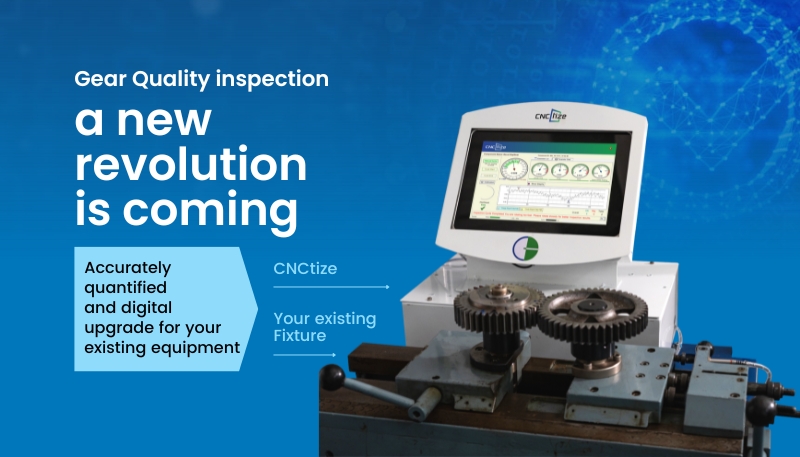Quality inspection is key to profitable growth
Opportunities | Hurdles and challenges |
Increased Global Demand, Export Opportunities | Competitive pricing, quality products, and reliable delivery schedules |
Diversification of products and new Export Markets – new geographies and industry segments | Quickly develop reliable quality inspection systems for new applications, market needs |
DIN 4, DIN 3 Class, high-precision gears | Investing in advanced manufacturing technologies |
Compliance – obtaining international certifications such as ISO 9001, ISO/TS 16949, and AS9100, and adhering to global standards such as AGMA, DIN, and ANSI | Near-zero internal or client side rejection, traceability |

The Evolution of Gear Quality Inspection: Embracing CNCtization
How long can we rely solely on analog measurement systems?
Quality inspection challenges for gear manufacturers
Measuring higher precision with accuracy:
Gears are critical components in many mechanical systems, and their performance depends on their precise dimensions and geometries. Ensuring accurate and precise gear quality inspection requires advanced measuring techniques, such as coordinate measuring machines (CMMs), optical measurement systems, and 3D scanning, which can be challenging to implement and operate correctly.
Reliable quality inspection for complex geometries:
Modern gears come in a wide variety of shapes, sizes, and geometries, including spur gears, internal gears, smaller-sized gears, and more. Inspecting these complex geometries for dimensional accuracy, tooth profile, and surface finish can be challenging, as it may require specialized measurement tools and software algorithms to interpret and analyze the data.
The surface finish of gears is critical for their performance, as it affects factors such as wear, noise, and efficiency. However, measuring surface finish accurately and reliably can be challenging due to factors such as roughness, waviness, and the complex geometries of gears. Ensuring consistent and reliable surface finish inspection requires specialized equipment and techniques.
In-process quality inspection in high-speed and large-scale production:
Gears are used in various industries, including automotive, aerospace, and heavy machinery, where high-speed and large-scale production is common. Conducting gear quality inspection in such production environments can be challenging due to factors such as high throughput rates, automation requirements, and the need for real-time inspection data. Developing and implementing inspection methods that can keep up with the high-speed production pace while maintaining accuracy and repeatability is a challenge.
Data-driven decisions, analysis and interpretation:
Modern gear quality inspection generates a large amount of data, including dimensional measurements, surface finish data, and other parameters. Analyzing and interpreting this data can be challenging, as it requires advanced data analysis techniques, statistical process control, and data management systems. Extracting meaningful insights from the data and making informed decisions based on it is a key challenge in gear quality inspection.
Eliminating human error and variability:
Even with advanced measurement equipment, human error and variability can still be a challenge in gear quality inspection. Factors such as operator skill level, fatigue, and judgment can affect the accuracy and repeatability of gear inspections. Ensuring proper training, standardization of inspection processes, and implementing robust quality management systems are essential to mitigate human error and variability in gear quality inspection.
Meeting compliance with standards and regulations:
Gears are often subject to industry standards and regulations, such as ISO, AGMA, and DIN standards, which define the tolerances, specifications, and inspection methods for gears. Ensuring compliance with these standards and regulations can be challenging, as they may be updated or revised periodically, and keeping up with the changes requires continuous monitoring and training of inspection personnel.


